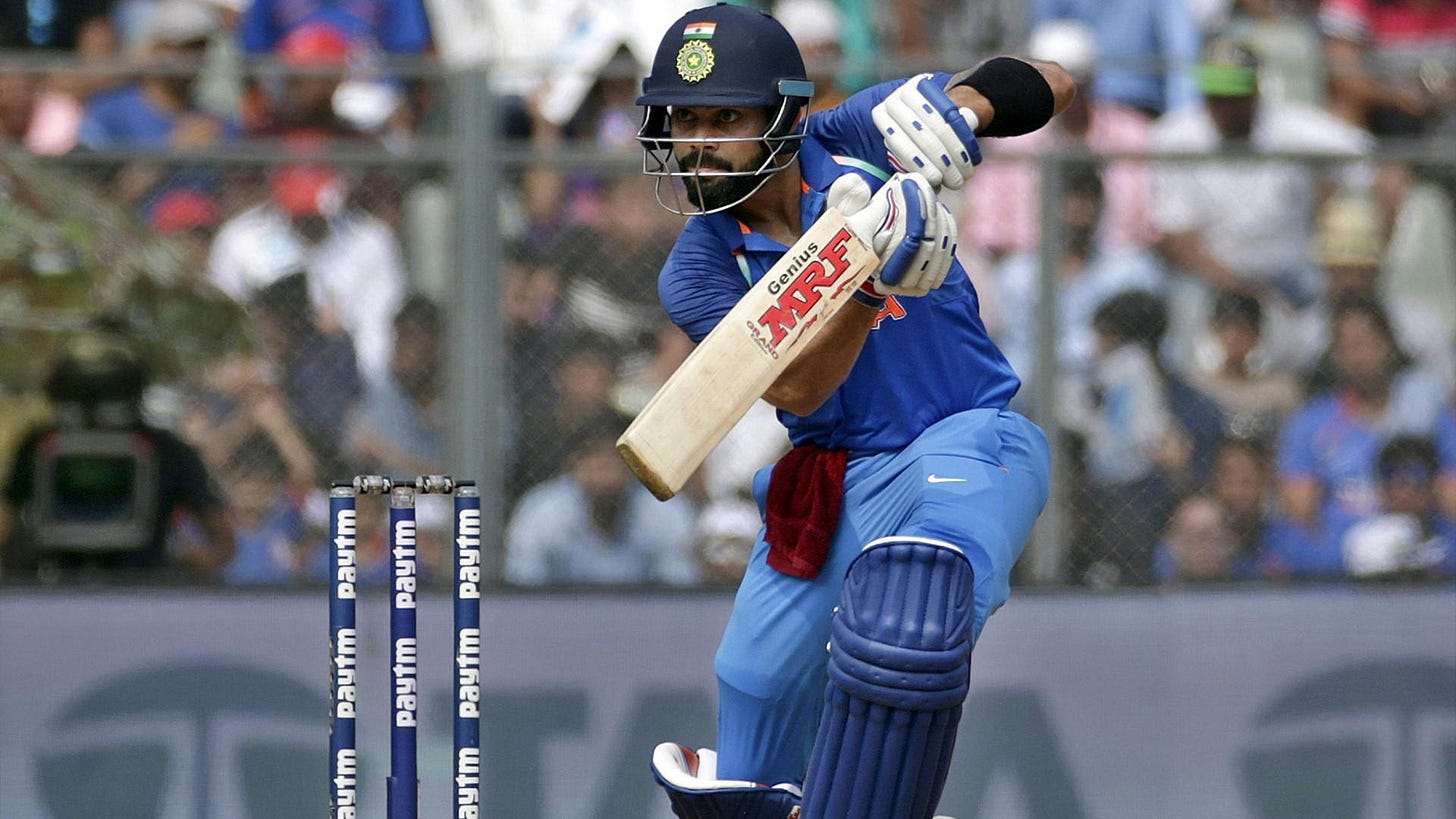The twilight of Virat Kohli: cricket's last classical batter in a T20 world
When a revered player falls from grace or loses that Midas touch we thought invincible, we collectively gasp and ask ourselves: “How could this possibly happen?” India’s master batter, Virat Kohli is on the wane. I have no doubt most of India is in denial, the fanbase there is like no other in the world, so incredibly loyal and trusting. That said, anybody who watched the recent series in Australia must concede at least some decline in the King’s powers.
So we are partly agreed that there is no disputing that Kohli is not the player he was. There is also no need to question the enormity of his career to date. But, sadly, every career has inflection points. Kohli’s seems past this point and trending down—that’s down for Virat Kohli, which is relative to a more normal career trajectory.
Kohli's reign marks the end of an era rather than just personal decline, like Bahadur Shah Zafar, the last great Mughal emperor. Zafar witnessed not merely his own power diminishing, but the twilight of an entire way of life—the final embers of a grand Mughal tradition before the empire transformed forever. In many ways, he was the last true ruler of a diminishing age.
Similarly, Kohli might be cricket's last classical batter, a method quickly giving way to modern alternatives. The game is hurtling into an era dominated by T20's explosive demands. Is there still a place for the mastery of traditional technique—the lock-down defense, the ability to build long innings, the patience to wear down attacks across five days? It all feels increasingly like a remnant of a regime once followed. Kohli's decline coincides not just with personal form, but with a fundamental shift in what it means to be a great batter in modern cricket. Looks have overtaken substance, for better or worse.



